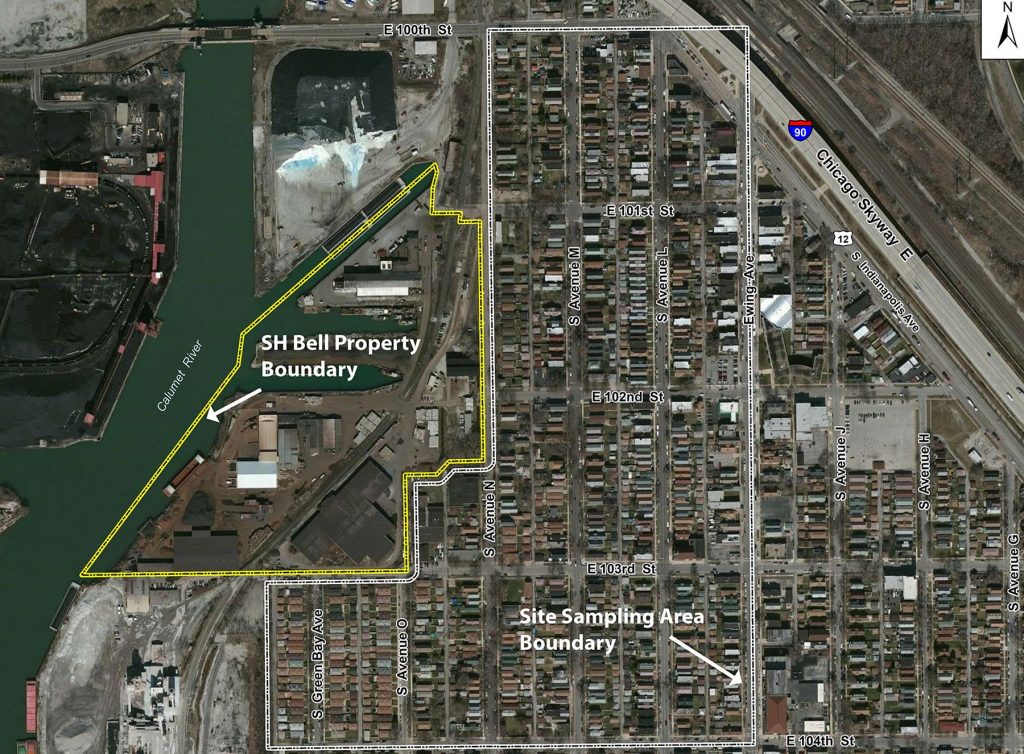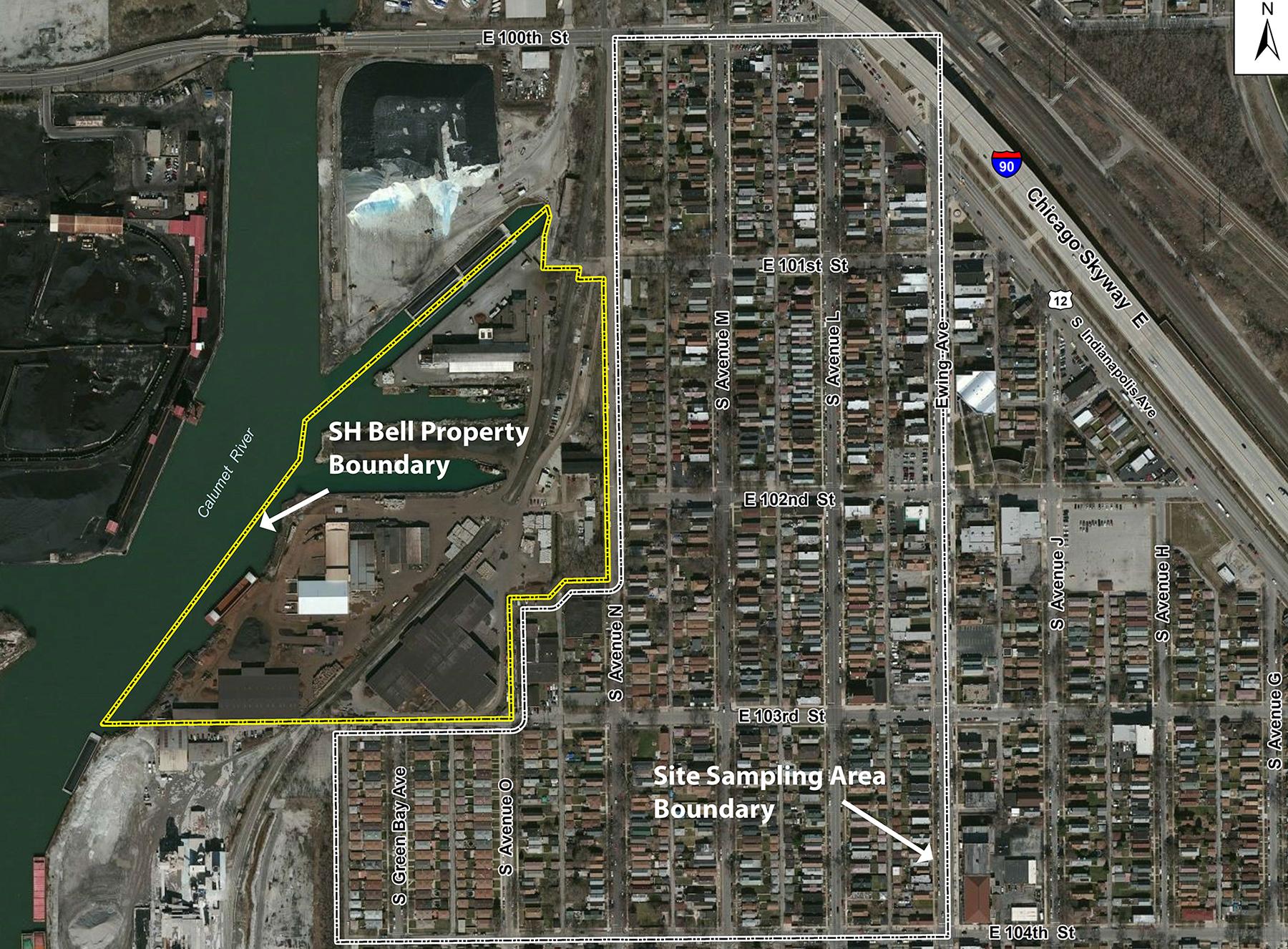Federal regulators are planning a cleanup of residential yards near a Southeast Side industrial facility this spring to remove high levels of brain-damaging manganese, but they have yet to finalize a plan for addressing homes with elevated levels of lead in the soil. 
The U.S. Environmental Protection Agency will remove manganese-contaminated soil from at least five homes near S.H. Bell Co., according to an update posted Monday to the EPA’s website and an agency spokesperson. The Pittsburgh-based company stores manganese and other materials along the Calumet River and has faced both federal and city violations in recent years for failing to control potentially dangerous levels of manganese dust.
Although the cleanup schedule is being finalized and will depend on weather conditions, the EPA spokesperson said work is likely to begin in May.
The EPA began collecting soil samples last May after testing conducted by Chicago’s Department of Public Health showed high levels of manganese, a heavy metal that is essential to steelmaking, at homes near S.H. Bell.
Nearly 20,000 people live within a mile of S.H. Bell’s facility in predominantly minority, low-income neighborhoods. Of those residents, more than 6,000 are children, according to EPA data.
A recently published study of children in Ohio found a significant link between higher concentrations of manganese in hair samples and declines in IQ, mental processing speed and working memory.
The EPA’s testing near S.H. Bell found four properties with manganese levels exceeding the federal emergency removal threshold of 5,500 parts per million, according to EPA data. Based on agency guidelines, it is likely that it will conduct soil cleanups at the four properties.
It is unclear, however, whether the agency will removal contaminated soil at the 35 homes where testing showed manganese levels exceeding a more stringent screening level used by the Illinois EPA to assess health risks.
The agency has yet to release a document known as an action memorandum that outlines the full scope of its cleanup plans. That document should address whether the EPA plans to conduct soil removal at homes where it has identified high levels of lead.
On its website, the agency said it “continues to evaluate the lead sampling data and has not decided on who is responsible or what cleanup activities may need to occur” for yards with lead-contaminated soil.
Of the 100 homes sampled by the EPA over the past year, 42 had lead levels in the top few inches of soil exceeding the federal cleanup standard for areas where children play, which is 400 parts per million, according to EPA data.
Two of those yards had lead above levels that can trigger an emergency cleanup, a standard set at 1,200 ppm, according to the data.
No amount of lead exposure is safe for children, according to both the EPA and the Centers for Disease Control and Prevention. The EPA says lead exposure can cause a range of negative health effects and is particularly dangerous for young children, whose nervous systems are still developing.
Prior to announcing its plan to remove manganese-contaminated soil at homes near S.H. Bell, the EPA sent a letter to the company as a general notice of potential liability and request for more information. S.H. Bell responded, and the EPA is evaluating the completeness of the response, according to the agency’s website.
In a statement, S.H. Bell said the EPA’s threshold for determining whether to remove contaminated soil “is a very conservative value that relies on outdated science,” citing an analysis by Gradient, an environmental firm hired by the company.
“Gradient analyzed all of the manganese soil data collected by the EPA and Chicago Department of Public Health and determined that the evidence strongly supports a conclusion of no health risk from the manganese levels measured in the soil,” S.H. Bell said in the statement.
In regard to the high lead levels found in soil near the company’s Southeast Side facility, S.H. Bell said it has never handled lead at that location.
Note: This story has been updated with additional information from the EPA.
WTTW News first reported on manganese pollution on the Southeast Side in February 2017. Since then, the Chicago Department of Public Health and the EPA have introduced air monitoring requirements for companies in the area that handle manganese, in addition to other testing protocols, and issued violations and fines. Read all of our stories about manganese here.
Contact Alex Ruppenthal: @arupp | [email protected] | (773) 509-5623







